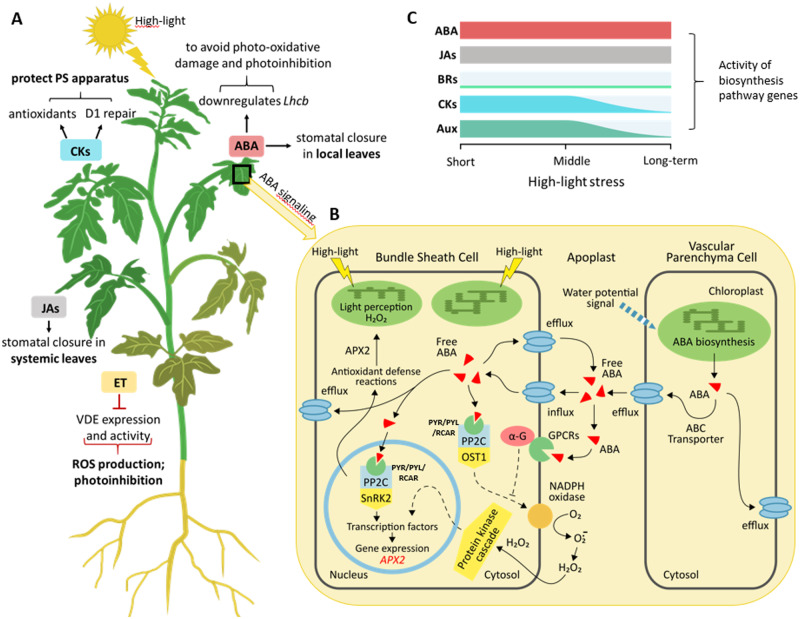Figure 2.
Impact of phytohormones regulating photosynthesis and photoprotection under excess light conditions. A, Examples of phytohormone responses to high-light stress at whole-plant level. B, Proposed model of ABA signaling in response to high-light exposure. A rapid change in water potential triggers ABA biosynthesis in vascular parenchyma cells. Free ABA can be transported via ABC efflux transporter to (i) vascular tissue to relay systemic acclimation at the whole plant-level, (ii) guard cells triggering stomatal closure, and/or (iii) bundle sheath cells inducing the antioxidant gene APX2. PYR/PYL/RCAR, PP2C, and SnRK2/OST1 form a core signaling complex, which regulates ABA-responsive gene expression (including APX2) and activity of NADPH oxidase in bundle sheath cells. Meanwhile, high light provokes H2O2 accumulation in chloroplast initiating retrograde signaling that feeds into the ABA regulatory network and speeding it up. High light-mediated induction of APX2 requires in addition to ABA, linear electron flux, redox signals from reduced glutathione, and extracellular H2O2. C, Activity of phytohormone biosynthesis pathway genes during high-light exposure. Aux, auxins.

